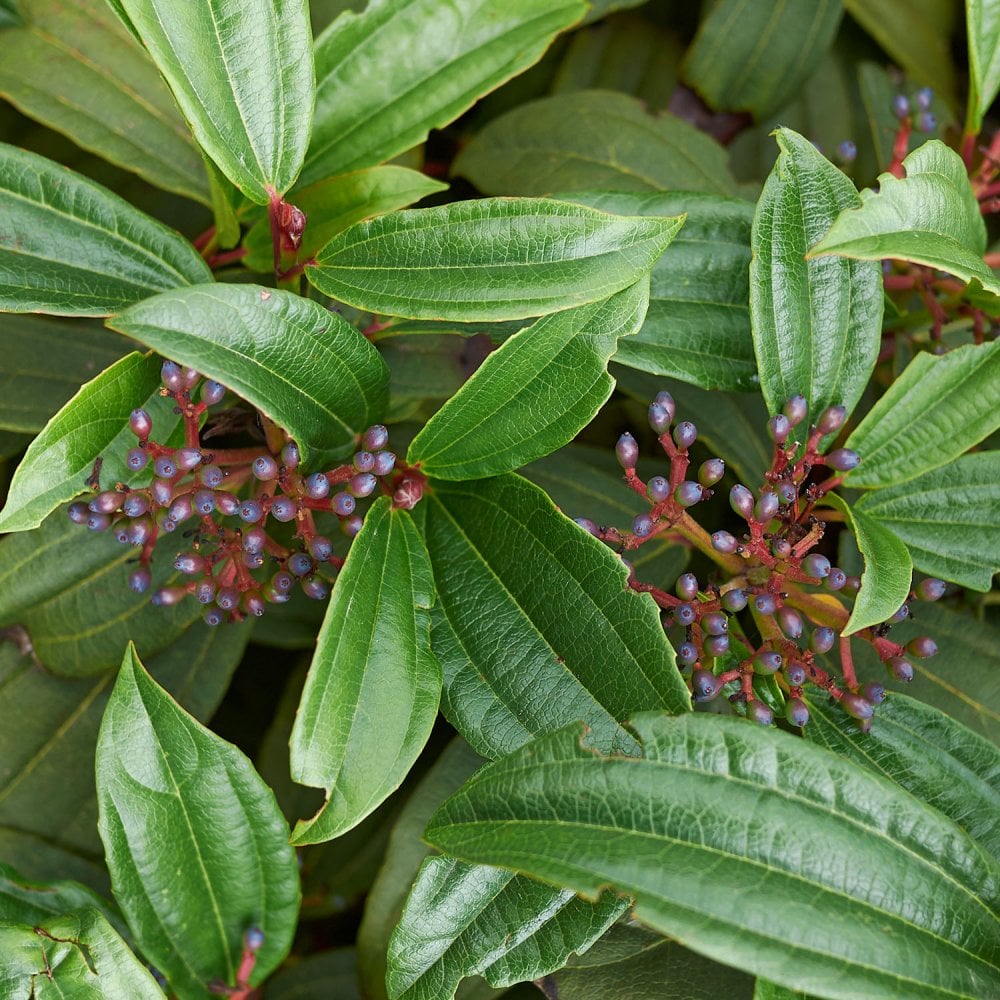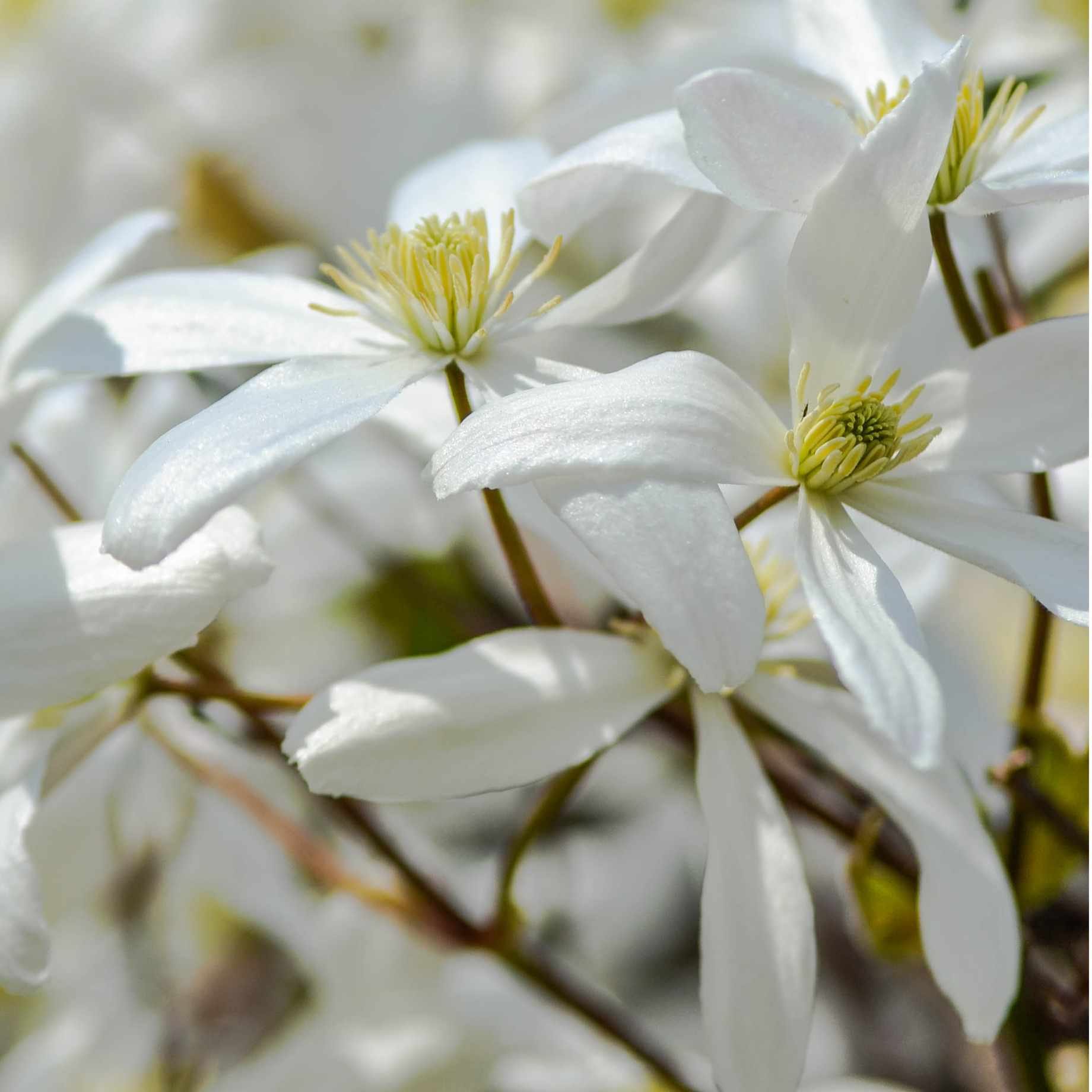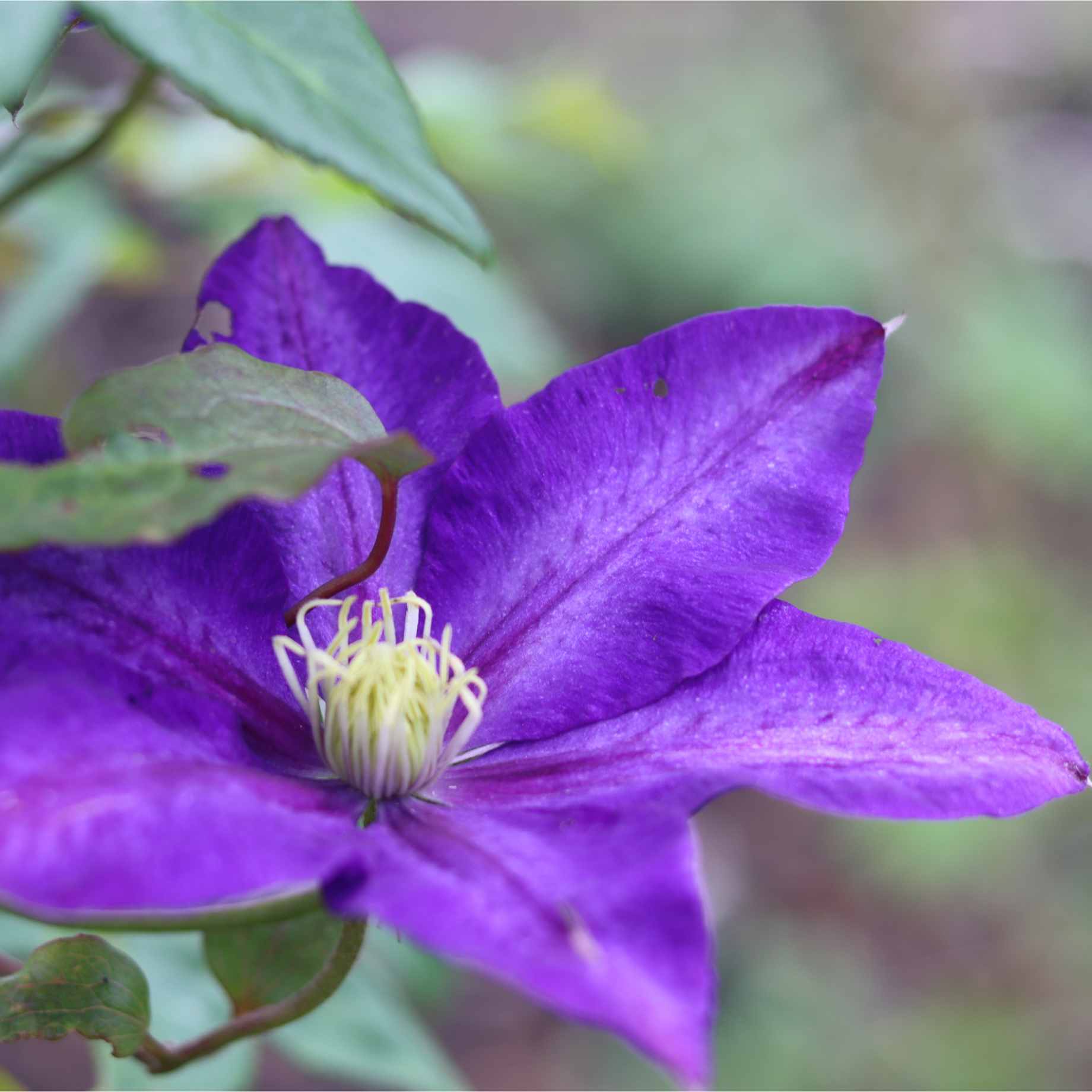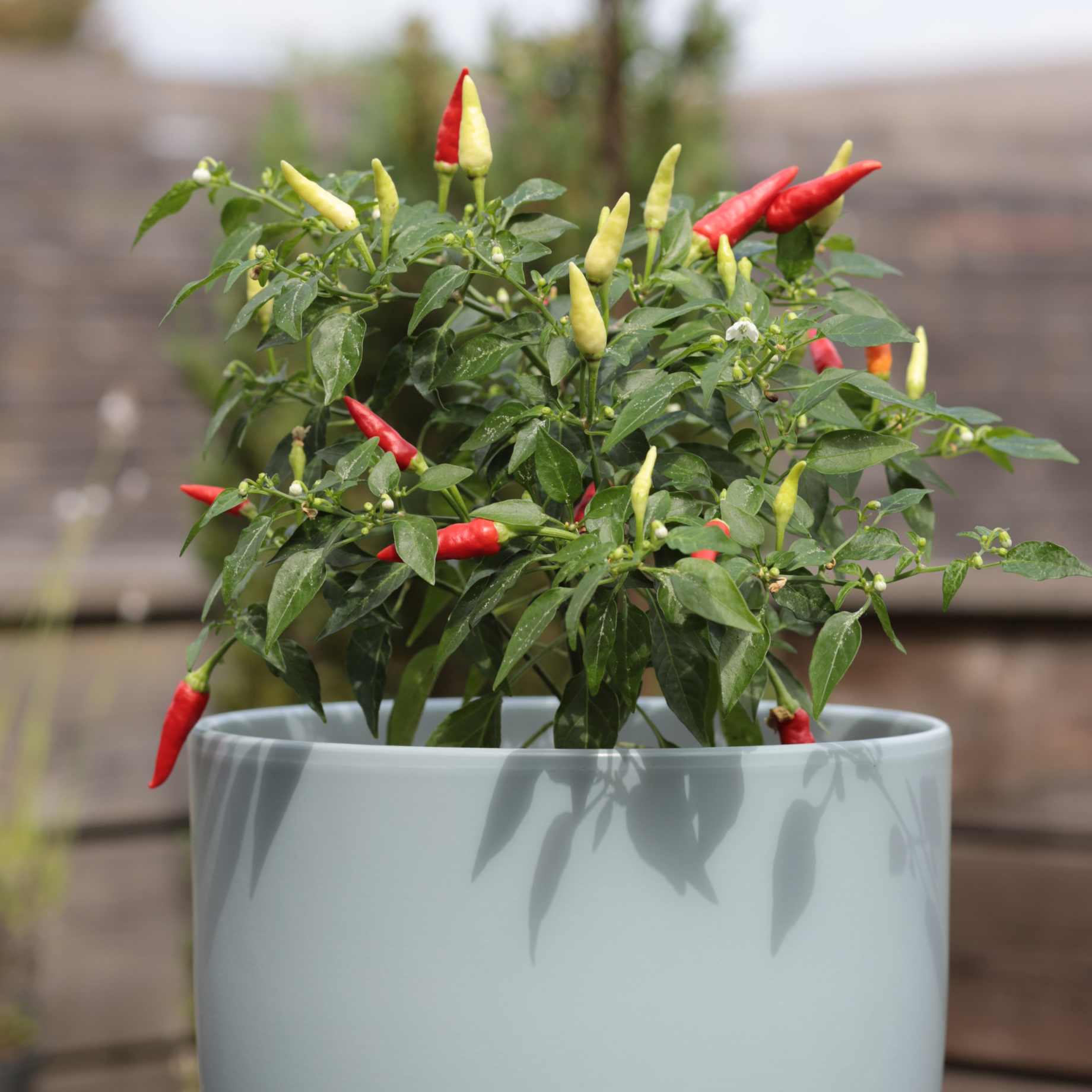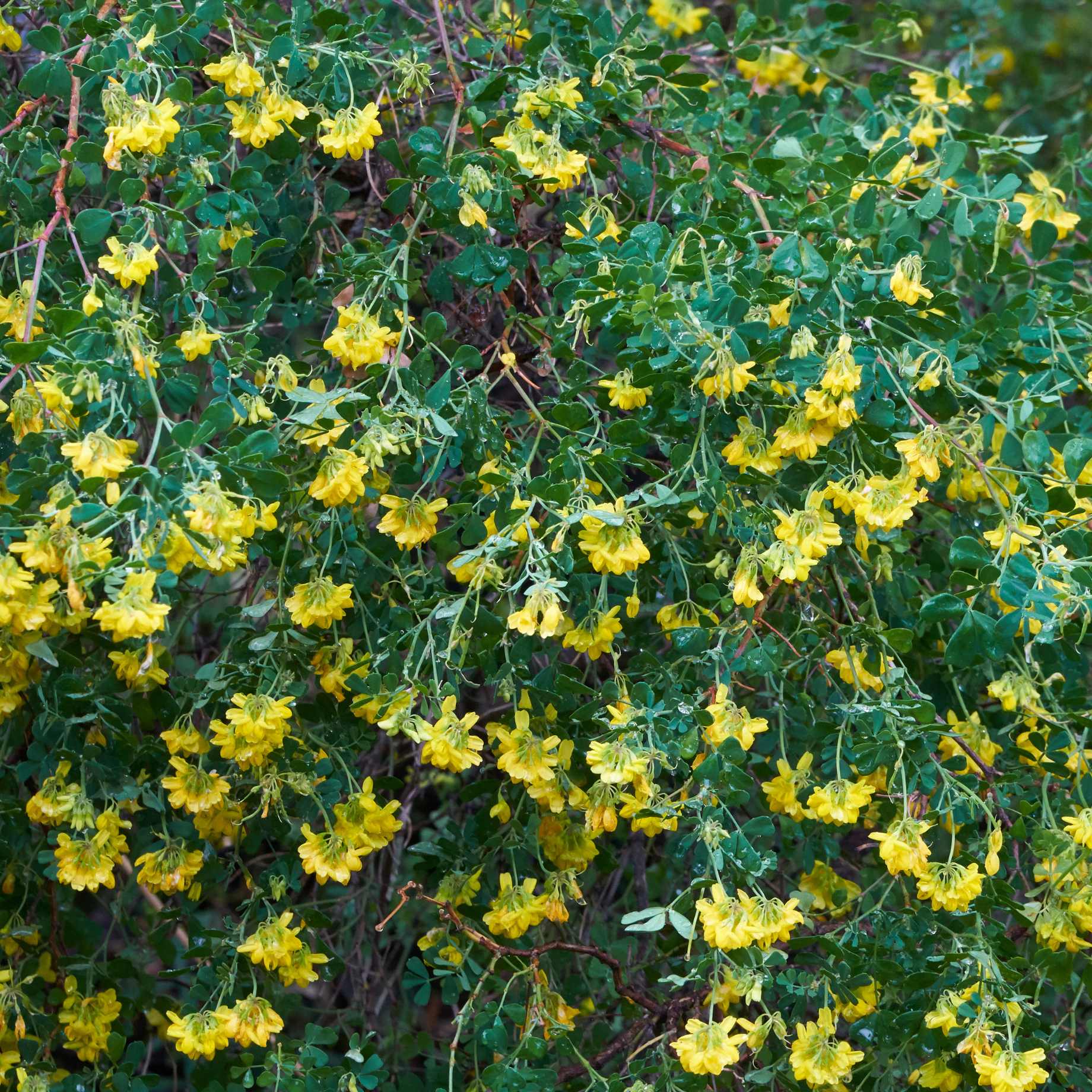Key features
AwardsRHS Award of Garden Merit
Final size1.5 x 1.5 metres in 20 years
FoliageDeeply veined leaves year-round (evergreen)
FlowersWhite flowers in spring followed by ornamental berries
PositionFull sun to part shade
Description
Viburnum davidii is an attractive small evergreen shrub with long-lasting ornamental berries. The evergreen leaves have three deep veins running length ways, which create a wonderful texture when viewed en-masse. These are supplemented by flattened heads of small white flowers, which if pollinated, give way to blue-black berries. The ornamental berries have a metallic appearance and can be present from summer through to winter.
A small spreading shrub, Viburnum davidii will reach just 1.5 x 1.5 metres in 20 years. It thrives in full sun to partial shade and is hardier than Viburnum tinus varieties.
AKA David Viburnum
Planting Steps
1Preparation
- Pot-grown plants can be planted at any time of year, whereas bare roots need to be planted between November and March.
- Clear weeds and grass within a metre of the planting hole.
- Dig a hole as deep as the root mass and twice as wide.
- To help your plant establish more effectively, sprinkle Rootgrow in the hole.
2Planting
- Gently loosen the roots and place into the planting hole.
- Ensure the top of the plant’s compost is flush with the level of the surrounding soil and the graft union or collar of the tree is above ground level.
- Mix 50% of the original soil with 50% compost.
- Fill in the hole, firming the soil gently.
3Last Steps
- Water generously around the base of the plant.
- If you are planting either a single stem tree or mature standard tree, we recommend adding a staking kit and rabbit guard.
Aftercare Advice
Trees and shrubs require a good watering regime for a couple of years whilst they establish. Water well and regularly through spring and summer, increasing in hot or dry weather. If planting in autumn, you may only need to water a little. It is advisable to keep the area free of competing weeds and grass during this period.
For more detailed advice and video guides, please visit our Help & Advice section.

